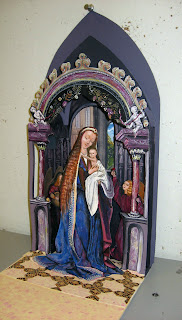Important concepts-
*The similarities of ancient Indus Valley civilization and those in Egypt, Mesopotamia, and the Aegean.
*The general characteristics of ancient South Asian figure art.
*The introduction of Buddhism to Asia.
Homework- the next article for your current events arts journal is due Tuesday, May 4th.
Extra Credit Update-
A reminder that the last day to turn in an extra credit assignment is Friday, May 7, 2010. None will be accepted after that. The options include a museum or gallery visit and the specific assignment that goes with that, or attending the May 3rd critique night in Ocean Grove and completing the related assignment. For those wanting to go to the critique, it's at the Jersey Shore Arts Center, on the corner of Main Avenue and S. Main Street (route 71) in Ocean Grove, NJ, 07753. (It's a large brick building that was once a high school) The group meets from 7 to 9 pm.
For next class 5/4/10- Bring a notebook and Book 3 (A View of the World), as we will continue our look at the art and architecture of Asia.




















